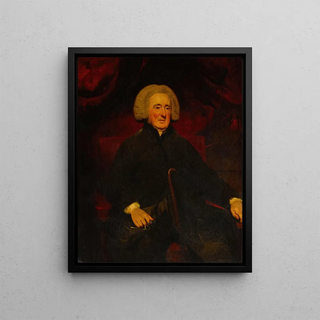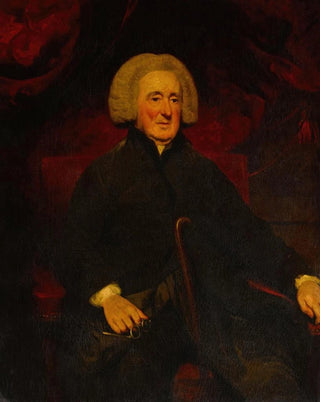Art print | Portrait of Charles Moss, archdeacon of Colchester and Bishop of Bath and Wells - John Hoppner


View from behind

Frame (optional)
At the heart of 18th-century England, art reveals itself through portraits that transcend mere representation. Among these iconic works, the "Art print of Charles Moss, archdeacon of Colchester and bishop of Bath and Wells" by John Hoppner stands out as a masterpiece, capturing not only the appearance of an influential clergyman but also the spirit of a rapidly changing era. This piece, both intimate and monumental, invites viewers to delve into the life of a man whose role was crucial in the religious and social architecture of his time. The finesse of details and the depth of emotions conveyed make this portrait a living testament to Hoppner's artistic genius.
Style and uniqueness of the work
John Hoppner's style is distinguished by his ability to combine realism and idealization. In the portrait of Charles Moss, the artist manages to capture the dignity and wisdom emanating from his subject while maintaining a natural approach. The carefully chosen color nuances create an atmosphere that is both warm and solemn. The bishop's face, marked by signs of age, is highlighted by subtle lighting that accentuates his features and penetrating gaze. The richly adorned clothing not only reflects Moss's social status but also demonstrates Hoppner's skill in rendering textures and fabric reflections. Every brushstroke seems to tell a story, inviting viewers to ponder the thoughts and concerns of this man whose life was dedicated to faith and community.
The artist and his influence
John Hoppner, born in 1758 in London, is one of the most renowned portraitists of his time. Trained under the guidance of George Romney, he developed a style that is uniquely his own, blending academic rigor with emerging romantic influences. Hoppner is distinguished by his ability to capture not only the physical appearance of his subjects but also their inner essence. He successfully appealed to a diverse clientele, ranging from nobility to members

Matte finish

View from behind

Frame (optional)
At the heart of 18th-century England, art reveals itself through portraits that transcend mere representation. Among these iconic works, the "Art print of Charles Moss, archdeacon of Colchester and bishop of Bath and Wells" by John Hoppner stands out as a masterpiece, capturing not only the appearance of an influential clergyman but also the spirit of a rapidly changing era. This piece, both intimate and monumental, invites viewers to delve into the life of a man whose role was crucial in the religious and social architecture of his time. The finesse of details and the depth of emotions conveyed make this portrait a living testament to Hoppner's artistic genius.
Style and uniqueness of the work
John Hoppner's style is distinguished by his ability to combine realism and idealization. In the portrait of Charles Moss, the artist manages to capture the dignity and wisdom emanating from his subject while maintaining a natural approach. The carefully chosen color nuances create an atmosphere that is both warm and solemn. The bishop's face, marked by signs of age, is highlighted by subtle lighting that accentuates his features and penetrating gaze. The richly adorned clothing not only reflects Moss's social status but also demonstrates Hoppner's skill in rendering textures and fabric reflections. Every brushstroke seems to tell a story, inviting viewers to ponder the thoughts and concerns of this man whose life was dedicated to faith and community.
The artist and his influence
John Hoppner, born in 1758 in London, is one of the most renowned portraitists of his time. Trained under the guidance of George Romney, he developed a style that is uniquely his own, blending academic rigor with emerging romantic influences. Hoppner is distinguished by his ability to capture not only the physical appearance of his subjects but also their inner essence. He successfully appealed to a diverse clientele, ranging from nobility to members






